5 Drivers of Advanced Energy Growth

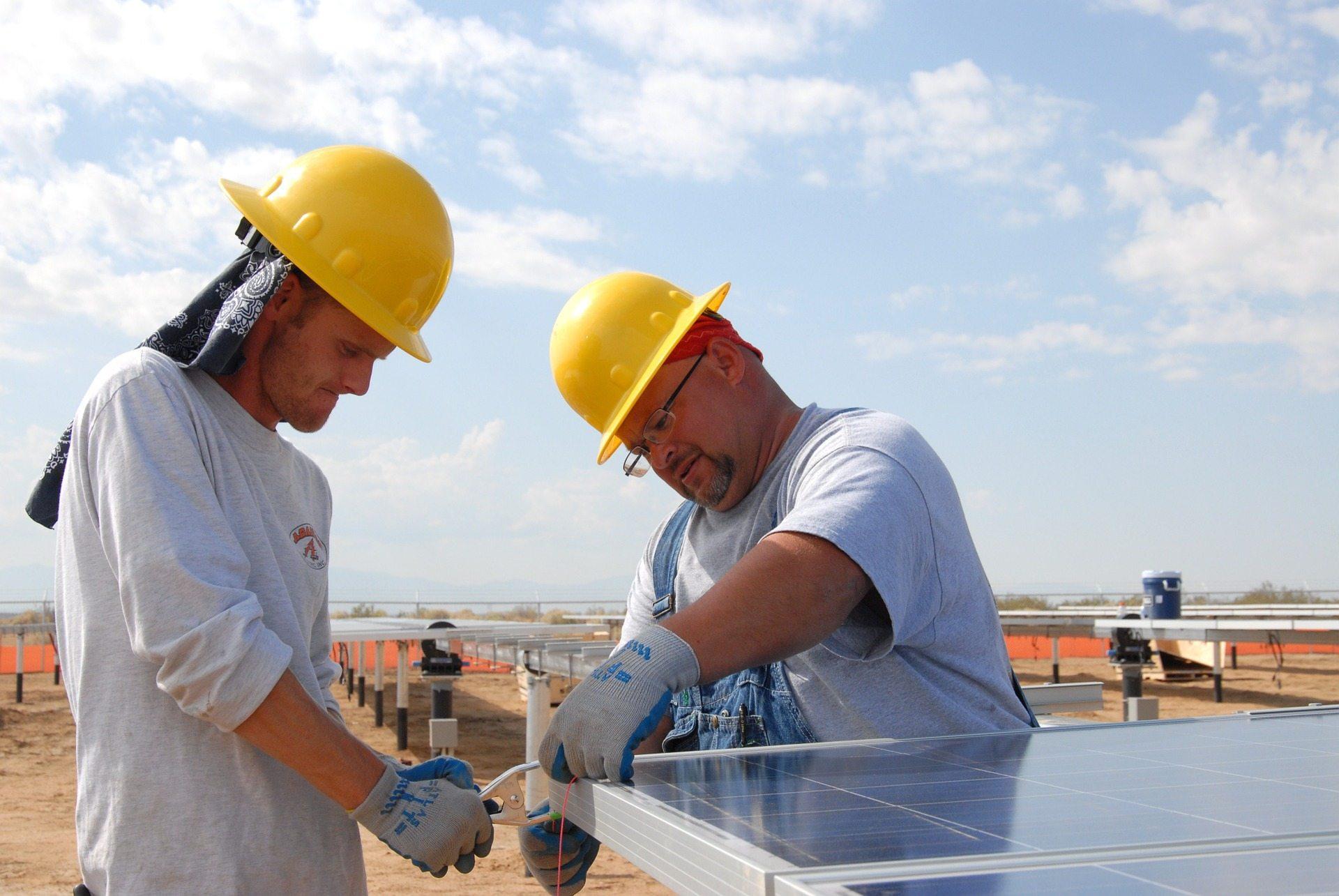
By Graham Richard
Energy is a highly regulated industry, at both the state and national level. But which is more important for growth: policy actions or market dynamics? For the advanced energy industry, the two are intertwined, and the economic impact is powerful.
At just under $200 billion in revenue, advanced energy is now bigger than the U.S. airline industry, equal to the pharmaceutical industry, and nearly as large as consumer electronics. In 2014, the U.S. market for advanced energy products and services grew 14 percent, five times as fast as the economy overall. Growth was strong across market segments like energy efficiency, demand response, renewable energy, and electric and natural gas vehicles. (These are some of the findings in Advanced Energy Now 2015 Market Report, Advanced Energy Economy's third annual market analysis, containing four years of revenue.)
Looking across the market and policy landscape, I see five drivers of market growth for advanced energy companies, now and into the future:
1. Reducing carbon emissions
EPA’s Clean Power Plan won’t be final until later this summer, but the draft rule is already shaping markets for energy investment.
For reducing carbon emissions from the electric power sector, advanced energy is the answer. Energy efficiency and demand response: low-emission natural gas generation; zero-emission renewable energy; advanced grid technologies and energy storage. These are the measures states can use to meet EPA standards and modernize their electric power systems for the 21st century.
2. Customer choice
Among Fortune 100 companies, 60 percent have greenhouse gas reduction or clean energy goals. So do 43 percent of the Fortune 500. Corporations like Apple, Google and Dow Chemical are installing on-site renewable energy where they can and procuring renewable power offsite when they can’t.
Over 23 percent of the wind power contracts signed in 2014 were with corporate buyers and other non-utility groups, including universities, military installations and units of government. These contracts between wind developers and commercial and industrial companies, governmental agencies, and educational institutions totaled more than 1,700 megawatts in 2014.
3. State leadership
For years, individual states have taken the lead on renewable energy and energy efficiency standards. These states have set an example, driving the deployment of advanced energy technologies and demonstrating what is possible and beneficial to customers. That state leadership continues.
In California, Gov. Jerry Brown has proposed a bold set of new goals: 50 percent renewable energy, 50 percent more efficient buildings and 50 percent less use of petroleum by 2030. New York is taking a leadership position in utility regulatory and business model reform, with its Reforming the Energy Vision proceeding before the Public Service Commission. North Carolina is a leader in solar power, and Arkansas is making strides in energy efficiency – and building an industry. Many other states are stepping up, setting goals, and creating a prosperous economy powered by secure, clean and affordable energy.
4. Local leadership
The same kind of leadership is exhibited in major cities around the country. Mayor Bill de Blasio made a commitment to reduce the greenhouse gas emissions of New York City by 80 percent by 2050. With 75 percent of New York’s greenhouse gases coming from the energy used to heat, cool and light buildings, that commitment translates into a massive agenda of building retrofits. But it’s not just the Big Apple.
More than 1,000 mayors across the country have set specific goals for sustainability and carbon reduction in their cities. Mayors are also leading the way in applying advanced information and communication technology to their infrastructure – water as well as energy. This is the smart cities movement, and it’s taking hold in cities from San Antonio to Pittsburgh. Navigant Research estimates that investment in smart city technology infrastructure will total $108 billion in this decade.
5. Jobs
For policymakers, the industries that matter most are the ones that create jobs. While there are no definitive national numbers, a variety of state studies have shown that advanced energy companies are significant employers – and growing – with states that have embraced advanced energy policies gaining the most jobs.
California has more than 431,000 advanced energy jobs – 2.4 percent of the state’s workforce, half as many as are employed in the state’s marquee motion picture, radio and television sector. With employers reporting plans to hire at a 17 percent clip in the coming year, California is well on its way to more than half a million people doing advanced energy work. With 88,000 advanced energy workers, Massachusetts matches California in the percentage of its workforce involved in advanced energy. Advanced energy employment in the Bay State has grown 47 percent since 2010. Illinois just topped 100,000 clean energy jobs, up nearly 8 percent from the year before.
These are the key forces that make the future bright for advanced energy companies, and for an economy based on energy that is secure, clean and affordable. With these drivers already in motion, we’re looking at a prosperous future powered by advanced energy.
Image credit: Pixabay/skeeze
Graham Richard is CEO of Advanced Energy Economy, a national business association.
As Gift Economies Rise, Will Traditional Markets Falter?


By Martin Dejnicki
Imagine waking each morning with a realization that you will be in total control of your actions for the day, which will directly aid others. In addition, imagine being comfortable in knowing the products or services you offer will be given away freely, without any explicit agreement for instant or future rewards.
This gift economy reality is the most idealistic of the sharing economy family, which itself encompasses many terms -- Rachel Botsman outlines some of the many overlapping terms here.
The gift economy challenges traditional market behaviors by offering goods and services without a financial reward. This gifting can occur through technology via collaborative consumption. It can match needs and haves with unused and under-utilized assets through decentralized networks and marketplaces of the collaborative economy. This extends to the free sub-facets within the sharing economy and on-demand services.
Gift economies prior to proliferation of the Internet
‘Dama,’ a gift economy in Mali, has thrived for thousands of years. It places an emphasis on human relationships and community over profits. The only expectation is that the receiver will ‘pay it forward’ for the system to flourish.
Modern charity and philanthropy in traditional market economies prove that humans are willing to share and give freely without any expectations of reciprocity as long as their immediate needs have been secured.
Technology-based seeds
Technology offers potential gift economies with increased efficiencies, scalability and awareness.
The Buy Nothing Project has grown to over 100,000 members worldwide in just 18 months. It enables the creation of local gift economies where people join to de-clutter or save money, but quickly realize the value in the community-based support systems.
Shareneeds, a gift economy initiative in development by Digital Purpose, will focus on creating gift economies within ones established social circles. The core purpose behind the tool will be to create a heightened sense of ‘awareness’ of needs and desires within these networks.
Decentralization of industry
The modern farming industry was diverse and sustainable a few decades ago. Now it has become centralized and environmentally unsustainable. It is deeply integrated with the supply chain industries at the national and global levels. But how far should our food travel to get to our plates?
In this case, many will blame the market economy and its natural movement and biases towards 'perceived' increased efficiencies. But the gift economy is unlikely to be the solution. Instead, the farming industry needs to be decentralized and properly regulated within the current market economy.
A great example of offering decentralized options is the Open Source Ecology initiative: an open-source movement based on designing blueprints for open-source industrial machines which anyone may build for a fraction of the price of traditional commercial products. This will enable people to build businesses and become producers and exporters, instead of victims of rejected business loan applications.
It does not function as a gift economy in any regard. However, it offers individuals and communities with decentralized options to do business and even build local micro-economies.
Mainstream equilibrium
Some will argue that gift economies succeed as mere survival tactics among the world’s poorest and therefore are not a threat as an alternative to market economies. But why must we choose one over the other? Could they not both coexist in equilibrium?
If competitive market economies predominantly seek ever increasing efficiencies at the expense of the marginalized, could we not achieve balance with the infusion of gift economies into the mix?
Within a few short years, the sharing economy family of initiatives have begun to significantly disrupt traditional industries such as hospitality and transportation. Is the wide adoption of these tools among the general public the sole result of high income inequality?
These decentralized sharing-based movements do not strictly adhere to the definition of a gift economy, since the majority rely on monetary exchanges.
Gift economies may be too idealistic, while current market economies are challenging from a sustainability perspective. Then maybe the novel technology-driven sharing economy industries are the fusion of the two into a wide range. Each individual could be free to choose where to reside on the scale. The decision may be influenced by a simple question: “What is it to be human?”
Image credit: Stock image
Martin Dejnicki is the Co-founder & CEO of Digital Purpose, a digital marketing and technology company based in Toronto, Canada. The company focuses on minimizing its carbon footprint by encouraging remote work and harnessing its innovative culture to build disruptive technologies that make a difference.
5 Apps to Help People Live a More Sustainable Life


By Jessica Oaks
Technology has provided society with countless ways to gain information and take action toward a sustainable lifestyle. With global warming being a hot topic and constantly inconsistent extreme weather patterns taking place all across the globe, it is now more apparent than ever that, regardless of any debate, awareness has been raised.
People may feel helpless when taking on the task of trying to save the planet, but that’s where technology comes to save the day. Thousands of useful apps and increased knowledge have become very accessible. The killer combination of technology and sustainability has led to the creation of the following apps that help people live a more sustainable life.
1. iRecycle
Reduce, reuse and recycle with iRecycle. This application is a go-to resource for recycling. It tells you how, where and when to recycle using your current location. Additionally, iRecycle is an educational platform that provides information on what can be recycled, especially for items that have specific requirements such as electronics. You can share your enthusiasm for recycling through the app’s social feature. Spread the word because recycling is an activity everyone can participate in — peace, love, recycle.
2. HowGood
You are what you eat, and the food you choose to buy not only affects how you personally sustain your life, but the process of how it was made also affects the environment.
HowGood is an app that lets you scan a product’s barcode at the store or search for its name to find out product info. It literally tells you how good something is for your health and the environment, and projects socially-based ratings for over 100,000 products. Ratings reflect a combination of factors including community impact, ingredient sourcing, growing practices and food processing. Using the application is a great way to stay proactive and well informed about the sustenance of the world.
3. Zero Carbon
To hold yourself accountable for doing your part in saving the planet, you can download Zero Carbon. The app works much like a fitness tracker, but instead of solely tracking your exercise and nutritional intake, it records your daily tasks that impact your total carbon emissions. It’s a personal carbon footprint calculator that adds things like meat intake, thermostat temperature and driving mileage, and then generates a list of CO2-reducing tasks to complete.
4. Green Tips & Tricks
At this crucial point in time in society, “going green” is in, or at least should be. Green Tips & Tricks is an app that helps users live an eco-friendly, healthy and sustainable lifestyle by providing just what the name says: “tips and tricks” for going green. You can bookmark your favorite newfound knowledge and pass along useful info to friends via social platforms and email.
5. JouleBug
Working toward the goal of a sustainable lifestyle can be fun with the JouleBug game. Each time you do something that shows you made an effort toward sustainability, the app rewards you with badges, points and pins. For instance, if you remember to use a reusable coffee mug versus paper cup, points for you! The bonus feature of JouleBug is the option to sync up to utility bills to see just how much is saved each month. Users showed an average savings of $200 a year with the app, a big feat toward change for the better.
If there’s one thing you can do in this tech-filled world we live in, it’s to use new innovations for creating a better world. There are so many apps to choose from when trying to build a more sustainable society. Even if it’s just one person, collectively, we can make a difference, so let’s leverage what the great tool and power technology has given us to reduce our carbon footprints and ultimately save the planet.
Image credit: Rami Al-zayat/Unsplash
Jessica Oaks is a freelance journalist who loves to cover technology news and the ways that technology makes life easier. She also blogs at FreshlyTechy.com. Check her out on Twitter @TechyJessy.
EPEAT: Moving the Electronics Market Toward Green Standards


Environmental standards often aren't the first thing we think about when hunting for a new computer. We may check to see if it's well made, whether it uses a lot of energy to run and whether the manufacturer has a good rep. But oftentimes (probably too often), the bells and whistles win out over whether the apparatus was made with environmental concerns in mind.
It turns out that many companies are considering environmental design qualities anyway -- the reduction in environmental harmful emissions, the decrease in exposure to toxic substances like mercury and the use of substances that don't end up in landfills -- thanks to a set of privately designed standards. Those concerns are addressed by a set of standards designed through a consensus process of all key stakeholders.They are called EPEAT, or Electronic Product Environmental Assessment Tool, and they serve as the Green Electronics Council's gold standard for environmentally preferable electronics.
According to Sarah O'Brien, who serves as the director of stakeholder engagement for the GEC, the EPEAT program emerged as an answer to a dilemma shared by manufacturers and those buying their products: how to ensure that the equipment that purchasers were using were as environmentally compatible as possible.
"By the early 2000s, business and government organizations realized that their ICT (Information and Communications Technology) operations had huge environmental impacts – in terms of energy consumption, but also problems with unsafe disposal and recycling, toxic content, lack of recyclability or recycled content, and on and on," O'Brien said. "They wanted to address those issues and reduce their own impact, but struggled to define what constituted an environmentally preferable electronic product." The EPEAT program would eventually streamline the environmental standards for manufacturers and purchasers alike.
O'Brien noted that while it was the growing amount of e-waste that prompted a call for new, decisive regulations, the EPEAT program actually grew out of a consensus between industry representatives who proposed "'uniform measuring stick' of environmental performance criteria [that would] enable purchasers to easily incorporate these important criteria into their tenders." That stakeholder dialogue took several years of hard work, but in 2005, the Environmental Protection Agency recognized the efforts with a grant to support implementation of the program. That year EPEAT was accepted by the Institute of Electrical and Electronics Engineers and accredited as an IEEE American National Standard, launching the way for national and international recognition as an environmental standard for the electronics industry.
One of the most valuable contributions of the EPEAT program is the post-consumer recycling of valuable components and materials, steps that help reduce the presence of e-waste in landfills throughout the world. According to 2013 EPA surveys, only 40 percent of electronics are recycled in the U.S., as opposed to being sent to the landfill. However that statistic is improving, up by 10 percent from the year before. The EPEAT program both provides a mechanism for components to be recycled and reused, and publicizes the industry benefits of doing so.
"One of the particular advances linked to EPEAT is the inclusion of post-consumer recycled resins in electronic products – which was really unheard of when EPEAT hit the market," O'Brien said. As a result, "dozens" of new product models now contain recycled resin, reducing the demand for new plastics. The side benefit of the EPEAT program, said O'Brien, is that it helps support a growing market for post-consumer plastics.
The number of governments and private companies that have used EPEAT in recent years as purchasers of green electronics has helped EPEAT gain international recognition. The U.S. and Canadian governments, the state of California, Kaiser Permanente, and Microsoft have all made use of the EPEAT program in past years. This increased demand encourages manufacturers to adhere to standardized environmental guidelines.
In March 2015, President Obama issued an executive order updating federal sustainability requirements. Supporters of the EPEAT program noted that the order omitted the federal government's 2009 requirement for departments to adhere to EPEAT standards, and replaced the directive with an order that guarantees "procurement preference for environmentally sustainable electronic products." According to the White House Council on Environmental Quality, the directive was changed to reflect the administration's intention to "[avoid] endorsement or recommendation of any particular non-federal label." Later, Implementing Instructions issued by the White House Council on Environmental Quality and Federal Office of Sustainability clarified that EPEAT is still the only procurement standard for electronics that meets the Federal government’s requirements.
Other state, county and international government agencies, however, still maintain endorsement of the EPEAT standards as the go-to method for ensuring products are made with environmentally preferable components and are utilizing recycled materials whenever possible.
In addition, more than 50 different manufacturers now adhere to the standards, including LG, Lenovo, Apple, Xerox and Dell.
While the EPEAT program is currently limited to products such as desktops, laptops, tablets, screens and copiers, O'Brien said the standards are expanding constantly to meet the needs of the industry. On the drawing board are standards for mobile devices such as iPhones, tablets and other smaller devices that have taken the market by storm since the development of the EPEAT registry.
"The roadmap was developed in 2005," O'Brien said. "We all underestimated the speed with which [the development of] mobile devices would take." Those standards are expected to be out in about a year.
And of course, with the increasing use of solar energy, environmental standards for photovoltaic panels are also in the works. O'Brien said the GEC hopes to have the standards finalized within the next two years.
"I think the main lesson EPEAT teaches all of us is that when purchasers aggregate their demand [by banding together] to send a clear signal in favor of more robust, benign, efficient and effective products ... they can move the market," said O'Brien.
Editor's note: Care about green electronics? Consider attending the Emerging Green Conference in September.
Image credits: 1) Blake Patterson; 2) EPEAT; 3) LG
The Line on the Sidewalk: South Florida's Climate Change Dilemma


The third most populous state is waging a battle. It's a war that much of the population knows it probably won't win, mainly because the state government doesn't believe it exists.
The coastlines of southern Florida are disappearing, a precursor to what scientists say will eventually consume much of South Florida's lucrative real estate due to climate change. Experts estimate that within four generations the coastlines that shelter some of the country's richest business centers and vacation homes will have to be abandoned. Since much of that real estate is owned by some of the world's most noteworthy billionaires, the projection puts a whole new spin on the concept of refugee evacuations.
But it also forces Floridians to look at another issue that has been gnawing at their coastlines: The state government appears to believe that climate change doesn't exist - or at least isn't relevant to be discussed in the halls of the capitol, scientific studies or government agencies. The economy, which is what Gov. Rick Scott reportedly won his last gubernatorial election on, takes precedence in North Florida where coastal flooding is, if anything, just a distracting nuisance. For some in Florida, the link between the environmental degradation of the state's tourism empires like Miami, Key West and Disney World and the sinking of Florida's economy have not yet been scientifically proven.
And that leaves South Florida residents in a dilemma. How do they buttress the area's freshwater aquifers, which risk being contaminated by wash from coastal storms and surge, if the state won't recognize the need in the budget?
To a point, the government's reticence is understandable. Scientists are hard-pressed to state just how much the sea level is predicted to rise. Years ago, the figure was 1 to 3 feet by 2100. Now scientists say that number is conservative. Hard figures are difficult to ascertain. Plus, heady, technical terms like "amplifying feedbacks" that are meant to illustrate the seesaw effect that declining polar ice will have on warm seas thousands of miles south may sound sensible, but they seem to be a non-starter for a governor who has not yet publicly acknowledged that climate change is real.
But what also isn't being tackled yet is how to address what scientists predict will be "the great exodus" from Miami's shores in coming years, and how the state will deal with the tidal surge of populations as they move north. Whether Florida can absorb millions of environmental refugees within its own diminishing land mass and with a stressed water system is a question that is still in the making. And whether insurance companies will even be able to pay out on properties that are no longer viable is equally uncertain.
For now, some advocate developing a relocation strategy that would facilitate a more orderly move. It's an idea that understandably has a fair amount of pushback on Miami's million-dollar shorelines, where the resale potential of environmentally-stressed properties, especially those lots are slated to lose their access to potable water, is on the decline these days.
Still, some residents haven't given up on trying to convey the urgency of the situation. Organizations like ClimateCentral.org and HighwaterLine.org have realized that visual aids sometimes offer the most impactful messages.
HighwaterLine, which was founded by New York artist Eve Mosher, has come up with a very personal way to show residents in various cities just what high tide means. In 2007, with the use of a chalk marker, Mosher visually drew a line across New York City streets to show what endemic flooding (such as from storm surge) would do to the city if climate change continued. Her efforts were realized in 2012 following Hurricane Sandy, which was for many a watershed moment in accepting that climate change could, indeed, change the landscape of their city.
Today, HighwaterLine's visual message can also be found in downtown Miami, where flooding from rising sea levels is expected to bring unprecedented changes. ClimateCentral has bolstered these efforts by providing data that visually paints a picture of the infrastructure that will be lost as Florida's coastlines move inland.
However the Scott administration decides to address that unmentionable question of climate change, the government must know that the economic success of its top three industries: International trade (via -- you guessed it -- key South Florida ports), tourism and the Kennedy Space Center all rely upon the environmental well being of its coastlines. But since Florida's highest administrative office is limited to two four-year terms, the challenge of figuring out how to combat Miami's most pressing economic problem will most likely be the responsibility of Florida's next governor.
https://www.youtube.com/watch?v=inf-Wj2Xm40
Images: Adapting to a Miami flood: Maxstriz; National Guard enters Melbourne Fla. community: DVIDSHUB; Drawing flood lines - Curtis Hamilton for the Canary Project
Video map of sea level projections by Matthew Toro.
House Natural Resources Committee: 'Carbon Emissions Are Good'
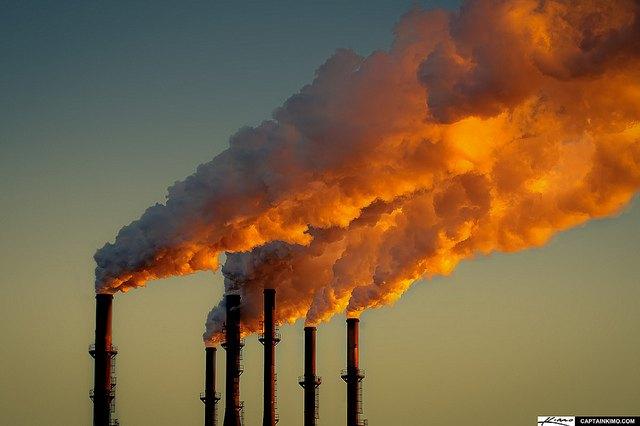

The House Committee on Natural Resources recently discussed the benefits that carbon emissions provide to the planet. Yes, you heard right, I said “benefits.” Greenhouse gases produced by burning coal, oil and other fuels are good, so some representatives and witnesses say. Shocking, I know.
Read the three arguments below if you want a good laugh.
1. No costs, only benefits, to burning carbon dioxide
Most environmentalists support taxing carbon emissions, which reduces these emissions and stimulates the economy. However, Kevin Dayaratna, the senior statistician and research programmer for the Center for Data Analysis at the Heritage Foundation, says: “There are literally no costs, but benefits, to burning carbon dioxide.” Therefore, the government should “subsidize, not tax, carbon dioxide emissions.”
How did he arrive at this, ahem, unusual conclusion? He looked at the Social Cost of Carbon (SCC), a metric that calculates how much damage a ton of carbon dioxide wreaks on society, and increased the social discount rate used to calculate the SCC. What is a social discount rate? The discount rate states how much we should invest today to prevent future damage. High discount rates underestimate how much stopping climate change now is worth.
The typical rate used is 3 percent, but Dayaratna used 7 percent, more than double the typical amount.
2. Carbon helps plants grow -- so the more we produce, the better
The director of the Cato Institute’s Center for the Study of Science, Patrick Michaels, said there are “thousands of scientific studies that point to the direct fertilization effect shown by an increase in carbon to agriculture.”
Really? Is that true? A little. Some crops do produce more for a time. But what Michaels not so accidentally failed to mention is that carbon increases damage other plants.
Climate Central states: “Plants do need CO2, but they also need water, nitrogen and other nutrients. Increase one of these without increasing the others and there’s a limit to how much the plants will benefit. Some do not grow much more at all. Others, like wheat, grow bigger but end up with less nitrogen. As a result, insects end up eating more to get the nitrogen they need. The nutritional value of food plants would be similarly reduced for other animals — including humans. Also, we could end up with vegetables that have too much carbon — perhaps producing spinach that would be very tough to chew!”
This is without even considering the fact that global warming is wreaking havoc on other crops due to higher temperature, severe droughts, stronger storms and flooding.
3. Cold weather brings the bubonic plague, warm weather brings cathedrals
“Fossil fuels have dramatically improved the lives of human beings,” Rep. Jeff Duncan (R-S.C.) said. “Man does better when it’s warmer. It got colder; we had the Bubonic plague. [Fossil fuels] ought to be the standard.”
Well now, at last we have a logical argument -- cold weather brings the Bubonic plague. Except that a study by the Proceedings of the National Academy of Sciences actually says the opposite. It says that it was warmer temperatures (not colder) in Pakistan that may have caused the spread of the plagues in European harbors.
Duncan cited another reason warmer weather is better. “Between 900 and 1300, the earth was a lot warmer than it is today. Man did so well we saw this Renaissance, where cathedrals were built and there was art and man did not have to struggle to survive as much as they do when it’s colder.”
The underlying assumption here is that the warmer the earth gets, the better. During the warm period that Duncan references, the earth was between 3.6 degrees and 4.5 degrees cooler than it has been for the past 25 years. It’s now significantly warmer now than it was during their warm period.
Also, the warm period mentioned is thought to have ended around 1220 A.D., but the Renaissance peaked at the end of the 1400s. My question is: When global warming causes the waters to rise so high that they flood cathedrals like St. Mark's Basilica in Venice, Italy, will Duncan finally decide global warming is bad?
Image credit: Kim Seng via Flickr
To Diversify Tech -- Force Inclusion?
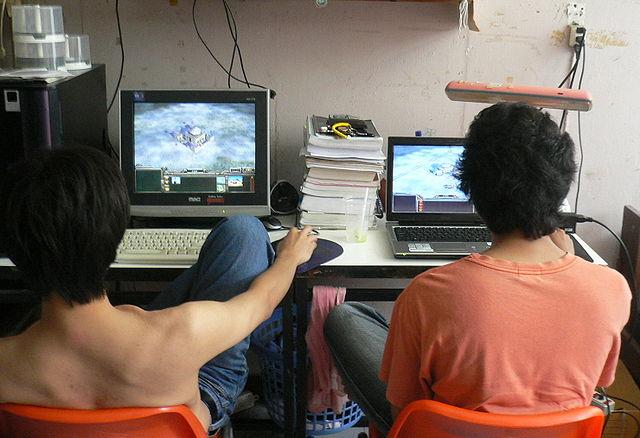

We've let the cat out of the bag. After years of pressure from activists, including Jesse Jackson, companies including Google, Twitter and Apple have released demographic reports on their employees. And it's not good.
Facebook workforce still mostly white and male according to latest diversity figures - The Drum http://t.co/1zrfJfMvMg #Technology
— Tech News (@technews_google) June 28, 2015
The Google workforce - White & male: 70% men, 30% women; 61% white, 30% Asian, 4% >2 races, 3% Hispanic, 2% Black, <1% other
— Noreena Hertz (@noreenahertz) June 16, 2014
Twitter's diversity report: white, male and just like the rest of Silicon Valley | Technology | The Guardian - http://t.co/PKJjXBDMhD — furtherfield (@furtherfield) November 23, 2014
This, of course, is not really news to anyone who has lived in the center of the tech boom, the San Francisco Bay Area, where rapid population growth – chiefly driven by technology companies growing staff – has rapidly remade the region. Bars that used to be full of diverse artists and activists like myself a few years ago are now full of mostly male tech workers, nearly all of whom recently moved to the area. It is rare to go to a meet-up or tech seminar not full of white men – the same white men that dominate the staffing at technology companies across the Bay Area.
But the question that no one could answer was – why? Technology was driven by youth, the same youth who powered Barack Obama to the presidency and, as data showed, were more integrated, pro-diversity and pro-gay marriage than any other generation. Our generation is also the one that is seeing women graduate from college at a far faster rate than men. This isn't to say that youth are post-race and post-gender, but it is surprising that an industry dominated by millennials would be one of the most white, male-dominated industries in America.
The best answer I've found comes from Kathryn Finney, an African-American female working to bring more women of color into technology.
"To really understand why tech is having a hard time with diversity, you need to understand libertarianism."The idea of forced inclusion is one that goes against the very libertarian foundations of tech. The freedom to run your life/company as you wish without outside interference is a sacred right in this community. There are venture capitalists, who pride themselves on being free-range and not monitoring their investments."
If you really think about it, this makes perfect sense. Look at Uber, for example, or any of the “disruptive” sharing technology apps and sites. Their model is, quite frankly, to destroy an industry and ask questions later. This is exactly the libertarian philosophy: allow the market to speak and ignore or avoid government.
This type of thinking adversely affects minorities. Taxi drivers in many cities are most often immigrants of color, who often can find no other job with their limited skills. Their run-down taxis often support large extended families. This is not the typical raid-hailing app driver. The few times that I've taken Uber or Lyft, my drivers fit the demographics of Silicon Valley – all male, all white or Asian. In Portland, Oregon, the Uber “revolution” is leaving immigrant families lurching for money as their cars can no longer compete.
If more of Uber's staff had friends working in the taxi industry, do you think they would demonize it so much? Or would they better understand why taxi drivers across the world are getting so angry?
Finney is right – the technology industry needs to find a way to be much more inclusive. That means Uber should first empower existing taxi drivers with their technology before disrupting their industry and destroying lives. It means Twitter needs to involve African-Americans as its evolves its tools (which happen to be heavily used among minorities). It means that all the technology companies need to shift from focusing on being the first out with a disruptive technology and focus instead on ensuring that this technology does not disrupt and ruin people's lives.
Having a more diverse workforce would assist in this as it would change the ethos of the tech industry. It is time that the staff at Google and Apple reflects the users of Google and Apple, because if their technology is really as empowering as they claim it is, then it should also be reflected in their own hiring practices.
This means hiring outside the bubble (outside the existing tech networks that dominate referrals), more programs to do outreach in low-income areas, and, most importantly, an industry-wide effort to help promote technological education in minority communities across the country. We need to begin educating the next generation so that, in the future, the next Google, Apple or Uber is founded by someone who represents the rest of America. Then let's build some truly inclusive technology.
Image credit: Wikimedia Commons
Costco Ditches Antibiotic-Laced Chilean Salmon


Costco is concerned about the antibiotics in fish. That’s why the nation’s third largest retailer ditched Chilean salmon in favor of antibiotic-free Norwegian salmon, Reuters reported on Thursday. Costco plans to buy 60 percent of its salmon from Norway, the retailer told Reuters, and that would reduce Chilean salmon by 40 percent.
Chile’s coast is teeming with salmon. The country is the second largest salmon producer in the world. The reason why Chilean salmon producers turn to antibiotics is that the coastal waters are also teeming with the bacteria called Piscirickettsiosis or SRS. It’s a rather nasty bacteria that, according to Reuters, causes “lesions and hemorrhaging in infected fish, and swells their kidneys and spleens, eventually killing them.” Salmon producers have yet to develop a vaccine to combat the bacteria.
Chile’s salmon industry produced about 895,000 tons of fish in 2014, and 1.2 million pounds of antibiotics. Antibiotic use increased a whopping 25 percent from 2013. Norway is the largest salmon producer, and while the country produced 1.3 million tons of salmon, only 972 kilograms of antibiotics were used in 2013. Norway’s use of antibiotics in fish and seafood is at the lowest it has been since the late 1970s, according to a recent report from the Norwegian Veterinary Institute.
Why is Costco so concerned about antibiotic use in fish? Jeff Lyons, overseer of fresh foods at Costco, told Reuters, “The whole industry is starting to shift.” He added that when people are asked about their biggest concerns with protein, “generally it's going to be hormones or antibiotics.” In other words, Costco is listening to its customer’s concerns.
Antimicrobial resistance is a growing threat
There is a reason why consumers are concerned about antibiotics use among livestock and fish. Antimicrobial resistance, which includes antibiotic resistance, is real and it is on the rise. The U.S. Food and Drug Administration (FDA) characterizes antimicrobial resistance as a “growing global threat.” The FDA cites the use of antibiotics in animals as contributing to the rise of antimicrobial resistance.
A 2006 study looked the use of antibiotics in finfish aquaculture to combat bacterial infections “resulting from sanitary shortcomings in fish rearing.” It mentions that finfish aquaculture has seen “accelerated growth.” The trouble with using antibiotics in fish is that they stay in the aquatic environment. That, in turn, has caused antibiotic-resistant bacteria to pop up in aquaculture environments. Those resistant bacteria can be transferred to human pathogens.
The study called for “global efforts” to promote the “more judicious use of prophylactic antibiotics in aquaculture as accumulating evidence indicates that unrestricted use is detrimental to fish, terrestrial animals, and human health and the environment.”
In other words, more retailers need to ditch antibiotic-laced fish for more sustainable alternatives. The health of our aquaculture environments and our own health depends on it.
Image credit: Flickr/Boca Dorada
7 Ways To Improve Animal Welfare
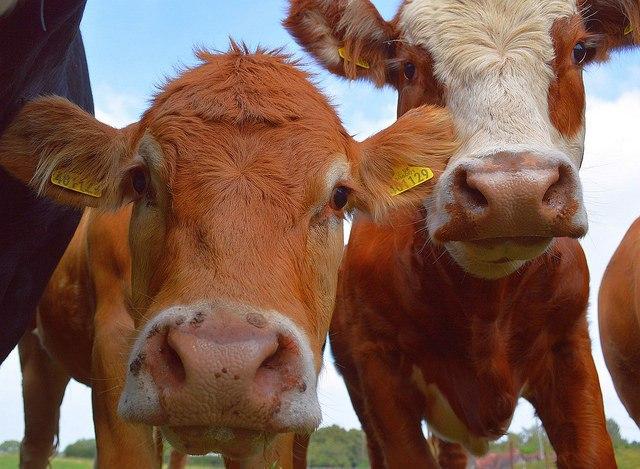

Temple Grandin, an animal scientist at Colorado State University, says that being autistic helps her do better work to improve animal welfare in slaughterhouses. There’s a stereotype that people with autism are cold and unfeeling. However, Grandin is empathetic toward animals.
Grandin shared her thought process over at Grist, “To design a good restrainer system, you have to really care about the animals it will hold. You have to imagine what it would be like if you were the animal entering the restrainer. It is a sobering experience to be a caring person, yet to design a device to kill large numbers of animals. When I complete a project I am left with a feeling of great satisfaction, but I usually cry all the way to the airport.” That has got to be one of the hardest jobs in the world.
She also understands how animals think: “It was easy for me to figure out how animals think and how animals would react because I think visually. Animals don’t think in language. They think in pictures. It’s very easy for me to imagine what would it be like to go through a system if you really were a cow, not a person in a cow costume but really were a cow, and autistic senses and emotions are more like the senses of an animal.”
Thinking visually isn’t the only thing that helps her understand animals. Grandin explains: “My nervous system was hyper-vigilant. Any little thing out of place, like a water stain on the ceiling, would set off a panic reaction, and cattle are scared of the same thing. They’re scared of things like high-pitched noise, sudden clanging and banging, sudden movement, maybe even a little chain that hangs down in the chute and jiggles because it looks out of place, and things that are out of place can mean danger out in the wild.”
Her compassion for animals and strong understanding of the way they think makes Grandin a strong advocate for animal welfare. She says that animals deserve a life worth living. “First of all, you gotta make sure your air quality is good, they aren’t lame, they don’t have sores on them, they are clean, and they get to act out their behavioral needs.”
Here’s her strategy for making these improvements.
1. Design yards for cows
Keeping pens dry and cattle clean is the most important aspect of a feed yard. Take some big machines in and slope the land so that it drains well. If cows stand in mud, they are likely to go lame. Too much dust makes it hard for them to breathe. They also need shade to stay cool (particularly black cows). These are common problems.
2. Feedlot cows: Grain versus grass
“Feeding cattle grain is sorta like a diet of cake and cookies. And cattle love to eat sweet yummy cake and cookies.” This diet is unhealthy but “for a steer in a feedlot … you slaughter them before it hurts them. They love to eat it. They come running when the feed truck comes.”
3. Realistic improvements for chickens
There are two types of chickens: the ones you eat and the ones that lay eggs that you eat. For the egg-layers, conditions in battery cages are terrible. The cage ceiling is so low the momma chicken can’t even fully stand up. However, there are some new “furnished cages” that provide “enriched housing.” There are no bird recliners or TVs, but the birds can stand up all the way and there’s even a little nest box where they can scratch around and lay their eggs in a little hidden area. This is a good alternative for commercial operations. If the birds aren’t in cages they create a lot of dust, which makes breathing harder.
4. Are all animals entitled to sunlight and grass?
There’s a trade-off between the treatment of animals and the ability of people with low incomes to afford healthy food. Twenty-five percent of people work minimum wage jobs and need to buy cheap eggs. Grandin says beef is a luxury, but eggs are a necessity.
How much do hens care about enjoying sunlight and grass? Just like you have your favorite recliner, hens have living preferences too. A hen’s desires can be scientifically measured so you can see what’s most important. “There are objective ways to measure her motivation to get something she wants — like a private nest box. How long is she willing to not eat to get it, or how heavy a door will she push to get it? How many times will she push a switch to get it?”
A hen’s gut instinct tells her to hide eggs from foxes, so she needs a piece of plastic to hide behind. Hens don’t have as strong of a motivation to go outside. “The motivation is pretty weak compared to something like the nest box, which is hard wired. Take dust bathing — for a hen dust bathing is nice to do, but it’s kind of like, ‘Yes, it’s nice to have a fancy hotel room, but the EconoLodge will do too.’”
5. Breeding strategies focused on more than optimizing food production
“When you push that animal too hard — either genetically or whatever — you start to have problems with its biology. When you breed an animal just to be productive, productive, productive, there’s always a price. Nothing is free in this world. They were breeding some of the hardiness out. It takes energy to fight off disease … ”
“... Pigs still have bad structural issues that started back in the late ’80s. If you’re just breeding for production traits, you don’t bother to look at the leg structure to make sure it won’t get lame.”
6. The worst animal rights abuses
“One of the problems that the dairy industry got into was breeding these gigantic big cows that would last just two years milking. Some of the really progressive dairies now are starting to go to smaller cows that last three or four years milking, a much better cow. I visited a couple this spring.”
“There are about a third of the dairies here in Colorado that are really, really progressive and really, really good. And there’s another percentage that are not, that will milk cows until they are half dead and then market them. There’s a certain segment of the dairy industry that’s just horrible. About 25 percent of all dairy cattle are lame, and lame cattle are in pain — that’s just not acceptable.” The cows are lame because of genetic breeding and standing on concrete so much, Grandin said.
7. Warning for activist companies
“You have to pick out some specific thing to work on. I worked on improving slaughter plants — that’s a specific thing. You gotta pick out something specific if you want to make constructive change on the ground, not destructive change. We have this abstractification, with activists attacking things they don’t even know anything about. And ag has responded poorly. Ag gag laws: dumbest thing they could have ever done. That just makes you look guilty. Why are they passing laws to make it a crime to videotape something?”
Image credit: Micolo J via Flickr
A New Psychology for Sustainability Leadership
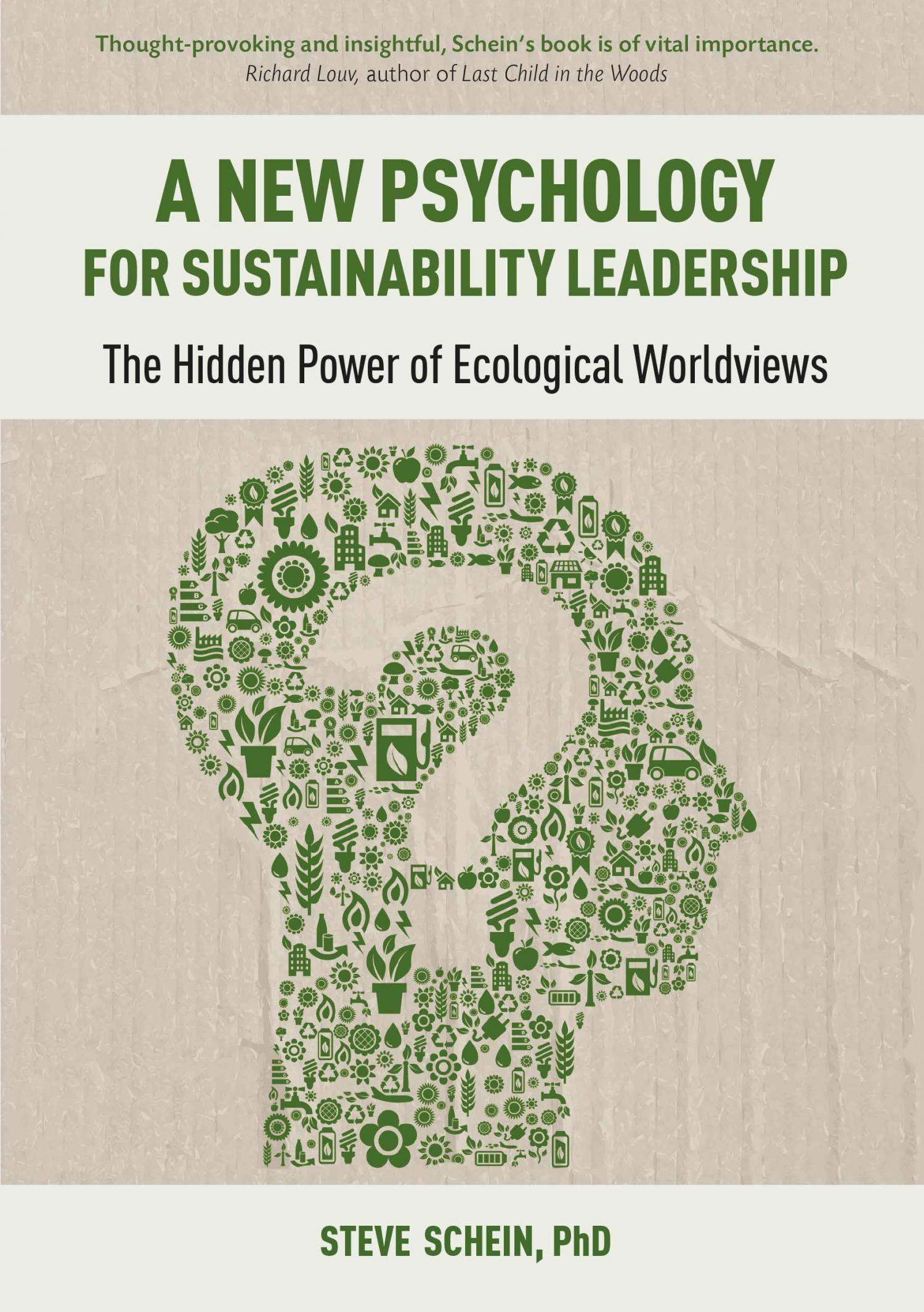

Editor's Note: The following is an excerpt from Steve Schein's new book, "A New Psychology for Sustainability Leadership: The Hidden Power of Ecological Worldviews" (published by Greenleaf Publishing and distributed by Stylus Publishing). You can buy the book here.
By Steve Schein
Today, there are major changes happening inside a select group of the world’s largest corporations. In response to the Earth’s most pressing environmental problems, a growing number of the most recognizable multinational companies are transforming the way they do business.
These new developments hold great potential for our future. Using a process known as biomimicry, engineers are designing new products based on a more thorough understanding of how nature works. Using a tool known as lifecycle analysis, accountants are measuring the full environmental footprint of products, from resource extraction through the manufacturing supply chain, distribution, disposal and recovery. Large-scale collaborative efforts between multinational companies, environmental nonprofits and governments are leading to new systemic approaches to our most complex global environmental problems involving the oceans, farmlands, forests, river basins and our fellow species.
However, we all know this has not been close to enough. Whether as sustainability educators, corporate social responsibility (CSR) executives, environmental activists or simply concerned citizens, we worry about each new piece of depressing environmental news.
For those of us that follow the corporate sustainability movement, we know that only a relatively small percentage of progressive corporations are thoroughly integrating sustainability initiatives throughout their global organizations. We also know that only certain executives within these corporations are fully committed to sustainability as their highest priority. As a result, the quarterly earnings report is still the major driver in the corporate world, and CEOs with sustainability at the top of their agenda are few and far between.
A focus on corporate sustainability executives
During the last decade, the sustainability position in multinational corporations has grown considerably in influence. Beginning with the appointment of the first chief sustainability officer in 2004, today there are senior sustainability executives in hundreds of the world’s largest multinational companies. In many cases, the chief sustainability officer now reports directly to the CEO. These are highly influential individuals inside today’s global corporations.
Behind each major environmental announcement by a multinational CEO, a small group of executives dedicate themselves to a wide range of sustainability initiatives, much of it in the face of strong resistance. Their companies have tens of thousands of employees throughout the world. Their global supply chains affect millions of people. Their customers reach into the billions. On the one hand, we can blame corporations as a whole for the ecological crisis. However, when we consider their potential to radically reduce their impacts, reinvent their energy sources and repurpose their infrastructure to eventually restore Earth’s ecosystems, the sustainable business movement may be the single most important environmental movement in the world today. When we take into account how this affects the availability of food and water for the planet’s poorest people, a case can likewise be made that it is also the most important social justice movement.
Despite the global scale of their companies, the number of executives who champion sustainability initiatives on a daily basis is surprisingly small. Although much has been written about their accomplishments, we don’t know enough about their personal histories, their deeper motivations and how they think. We don’t know enough about how they think about nature, leadership, resistance and change. At its essence, we don’t know enough about what makes these types of global sustainability leader tick.
The limits of “sustainability”
At the same time, we have become aware of the limits of the term “sustainability." We know that it can mean very different things to different people. We have seen how it can be used narrowly to mean short-term economics, jobs and national security; or it can used expansively to mean a complete transformation to deeply ecological and restorative business models. Sadly, we have witnessed how sustainability can be misused and misunderstood. In our darkest moments, we fear that the sustainability movement has fallen well short of its overall goal to transform business and society.
We continue to ask ourselves: Why? Why, despite all the scientific evidence, don’t all senior executives have a strong sense of urgency about transforming business in response to climate change? Why doesn’t everyone see the clear and deep connections between our traditional ways of doing business and harming the ecosystems we depend on for life? Why is there so much resistance to change? Although we tell ourselves that politics, jobs and our fossil-fuel-dependent economy and culture are the obvious reasons, we continue to search for new answers.
I’ve written this book to ofer a new type of answer to these questions and a new place to look for solutions.
Cultivating a new psychology for sustainability
Lester Brown, president of the Earth Policy Institute and author of more than 50 books on global environmental issues, observes: “Every political movement has its psychological dimension. Persuading people to alter their behavior always involves probing motivations; activism begins with asking what makes people tick? The environmental movement is no exception.”
Although thousands of sustainability-related books, articles and corporate reports have been published in recent years, today little is known about the deeper psychological motivations of corporate sustainability leaders. Leadership consultant and human development researcher Barrett C. Brown observes that the more we understand how psychology and worldviews drive the behaviors required to lead sustainability initiatives, the more effectively we will be able to cultivate them, especially during times of complexity and rapid change.
As sustainability educators, executives and activists, we need to develop a new, shared understanding of what sustainability leadership must become. We need a new story, a new language and, most of all, a new psychology.
Ecological worldviews: A missing perspective
The research I share with you in this book draws on eight distinct social science traditions that have not been widely used to study corporate sustainability leadership. These include eco-psychology, deep ecology, ecological economics, social psychology, environmental sociology, indigenous studies and the new field of integral ecology. I also rely on developmental psychology research about how worldviews are constructed, how we interpret the world around us, and how this can change over the course of our lives.
Using key insights from these disciplines, I include in the book extensive quotations from my interviews with 75 global sustainability leaders in more than 40 multinational organizations. The interviews suggest that many of the most influential corporate sustainability leaders are motivated by their ecological worldviews, which can be thought of as the deep mental patterns and ways of seeing our relationship to the natural world. Ecological worldviews can also be thought of as our cognitive and perceptual capacity to see the world through the lens of ecology, which is essentially the relationship of species and their environment.
In the minds of sustainability leaders, ecological worldviews can enhance the perception of our interdependence with the Earth’s planetary ecosystems, which can strengthen the depth of their commitment in the face of continued resistance. The interviews further reveal expressions of what developmental psychologists call post-conventional worldviews, which can enhance their ability to effectively communicate to diverse audiences, collaborate across boundaries and unlock capacity to lead large-scale transformational change.
MIT professor emeritus and long-time sustainability scholar John Ehrenfeld reflects that, in order to address sustainability fully and meaningfully, we must make fundamental shifts in the way we think. Referring to our capacity to lead transformational change, he invites us to consider that, in the face of opposition, an individual can always change his or her own worldview.
For too long we have assumed that all multinational corporations, and by default all executives inside them, have the same worldview. If we are to advance the field of sustainability leadership beyond its current limitations, it is vital to understand how global sustainability leaders think, how their worldviews have been formed, and how this influences their actions.
By shining a light on the psychological dimensions of a large group of sustainability executives in multinational corporations, my hope is this book will open up new conversations and new research across a wide range of social science disciplines in the context of corporate sustainability leadership.
Ultimately, this can lead to a new psychology for sustainability that can be integrated into public and private institutions everywhere to support the development of the next generation of sustainability leaders for the benefit of all life on Earth.
Steve Schein is a sustainability leadership educator, researcher, and executive coach. After 25 years in the corporate world and 10 in academia, he sees the evolution of business leadership and education towards ecological sustainability a global imperative. To that end, his research focuses on the development of ecological and post-conventional worldviews in the setting of multinational corporate leadership. He has been a member of the faculty at Southern Oregon University since 2005, where he founded the certificate program in sustainability leadership. Prior to joining the faculty at SOU, he was a certified public accountant (CPA) and former CEO with senior management experience in several companies. Dr. Schein’s research has been published in The Journal of Corporate Citizenship, The Journal of Management of Global Sustainability, and presented at numerous conferences on corporate social and environmental responsibility. He currently serves on the Board of Directors for Net Impact and the GEOS Institute.